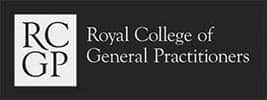
Preventative Botox injections are used to slow the formation of lines and wrinkles. Unlike “traditional” Botox injections, preventative Botox injections are administered to prevent, rather than reverse, lines and wrinkles on the face, neck, and decolletage.
Used for both medical and aesthetic treatments, Botox (botulinum toxin) injections have been marketed as the ultimate solution for reversing wrinkles and lines caused by ageing. This post will explain how preventative Botox works and answer the top seven questions about preventative Botox injections.
It is widely accepted that preventative Botox injections can help prevent wrinkles. To fully understand how this anti-ageing treatment works, you need to have a basic concept of what Botox injections actually do. Don’t worry; we’re not going to get too scientific!
Botox is a neuromodulator that causes muscle paralysis by interfering with neuronal transmission. The bacteria Clostridium botulinum produces the neurotoxin used in botulinum toxin type A injections. Botulinum toxin type A injections were first marketed under the American brand Allergan, with the brand name Botox. It is now made by other brands with different brand names, including Dysport, Jeuveau and Xeomin.
Typically, Botox takes a duration of 24 to 72 hours to take effect. In extremely rare cases, it could take up to five days for some people to experience the full benefit. The effects of botulinum toxin generally peak at around 10 days and will normally continue to take effect for around 12 to 16 weeks.
The use of Botox has been approved by the Medicines and Healthcare Products Regulatory Authority (MHRA)for the treatment of eye muscular spasms related to blepharospasm, strabismus and cervical dystonia since 1989. Botox was subsequently granted approval by the MHRA in 2002 to treat frown lines between the eyebrows.
Additionally, it is used “off label” for:
Preventative Botox injections use the same botulinum toxin type A injections as “standard” or “traditional” Botox injections. The difference is the dose administered and the number of injections. When Botox is used to smooth out lines and wrinkles, a stronger dose is required, and it will be injected into fewer areas.
Also referred to as “Baby Botox”, preventative Botox uses a micro-dosing approach, which uses multiple injections of Botox in lower doses — this requires significant skill to administer. The aim is to partially paralyse the muscles; this means you will still have some movement, but because the procedure limits facial movements, it reduces the depth of lines and wrinkles that form. With less muscle movement, your skin will remain smoother, and any lines and wrinkles that do form will be shallower and less noticeable.
Preventative Botox injections are safe, but this doesn’t mean everyone should get preventative Botox. Preventative Botox is not administered to treat lines and wrinkles; it is used to slow down the depth of wrinkles by reducing muscle movement before they happen. However, when “traditional” Botox injections are administered, you will notice a significant improvement; lines and wrinkles will appear smoother, and the muscles treated will be paralysed. If you like to be able to see the results of an aesthetic treatment, preventative Botox may not be for you.
Ageing is generally judged by the appearance of lines and wrinkles, as well as skin laxity, which leads to a less defined jawline and under-eye bags. Preventative Botox injections may help to keep you looking younger by reducing the depth of wrinkles, giving your skin a smoother, more youthful appearance, but it should not be viewed as a “miracle”, stand-alone anti-ageing treatment. Ageing depends on various factors, including genetics, diet and environment. Combining preventative Botox with daily use of high-quality, clinically-proven skincare products and sun protection cream SPF 50 is the best way to keep your skin toned, healthy and looking younger.
As you age, you may want to combine preventative Botox with other aesthetic treatments. At Harley Street MD aesthetic clinic in London, we provide a wide range of aesthetic treatments that can be combined with preventative Botox to help keep you looking younger, including treatments that:
There is little information available about recurrent botulinum toxin injections used for aesthetic purposes. One of the long-term documented effects of Botox is becoming more resistant to botulinum toxin as a result of the body developing antibodies. This could mean a higher dose of Botox and more frequent treatments are required to produce the same anti-ageing effects.
In a single retrospective analysis of 943 patients who underwent at least three consecutive recorded Botox treatment cycles, it was seen that, in subsequent treatment cycles, the incident rate of adverse effects was reduced. Another case study into the long-term effects of Botox found no adverse events were recorded in a patient who had frontal and glabellar lines treated with botulinum toxin type A on a regular basis for 13 years.
At this time, the current data from clinical studies suggests that when Botox is used strategically and considered injections are administered carefully, there are no long-term cumulative effects of Botox. However, it’s vital to understand that there can be serious adverse effects when Botox injections are not administered correctly, and in rare cases, there is a risk of an allergic reaction.
A “frozen” face from too much Botox is associated with treatments of high doses of Botox on a regular basis. This is evident in individuals who often appear to be vacant due to the lack of facial expressions they can form. Serious adverse effects of Botox can also be a result of too much Botox; these include drooping eyebrows and the upper eyelid, caused by excessive Botox in the forehead and between the eyebrows. Another adverse effect that has been recorded is dysphagia (difficulty swallowing) from Botox injections in the neck.
This is very different to the outcomes of the highly professional Harley Street MD in London, where our clients often tell us that people comment on their refreshed and rejuvenated looks. The trick is to administer enough Botox to smooth out the skin without resulting in a “frozen”, unnatural look. However, although the anti-ageing effects can appear very natural when Botox is expertly administered, there will be a noticeable difference following the treatment.
Furthermore, preventative Botox is all about using microdoses that allow some movement in the muscles to remain. This treatment has grown in popularity because there is no risk of too much Botox causing adverse effects. However, this does not mean there are no risks of complications, such as infection or damage to the vessels in the skin caused by incorrect techniques.
As with almost all types of aesthetic treatments, there are risks and complications associated with preventative Botox injections. These can be significantly reduced by selecting a medically qualified and experienced aesthetic practitioner with a thorough knowledge of the anatomy of the muscles in the areas treated.
All preventative Botox injections and injectable aesthetic treatments provided at Harley Street MD in London are performed by Dr Chia Tan, a renowned aesthetic doctor who has had various papers published in medical and scientific journals. In addition to being fully registered with the (GMC), Dr Tan has a Diploma in Otolaryngology-Head and Neck Surgery (DOHNS) and is also a member of the:







